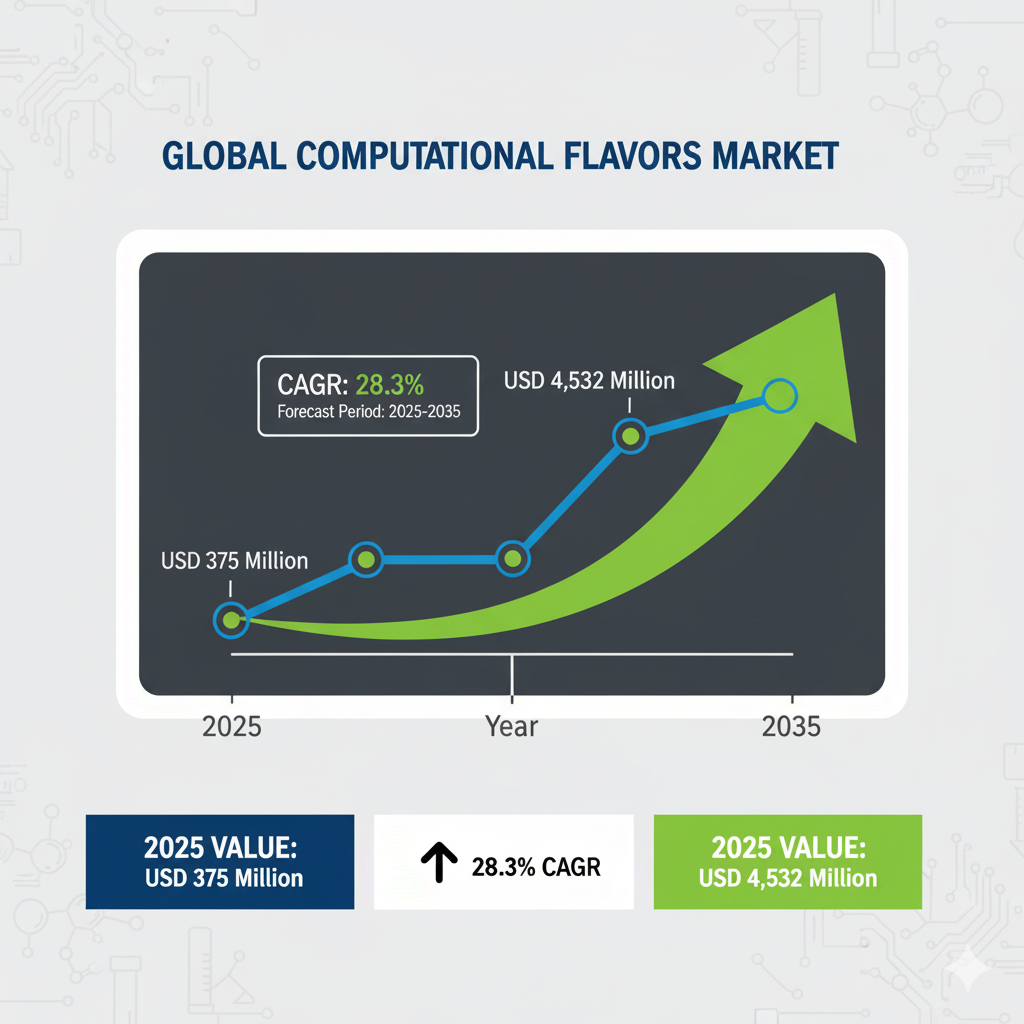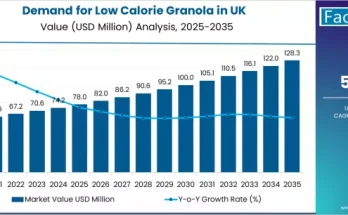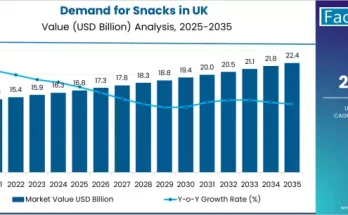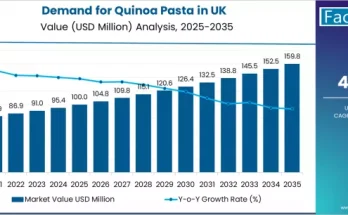The global computational flavors market is expected to reach USD 4,532 Million by 2035, up from estimated value of USD 375 Million in 2025. During the forecast period 2025 to 2035, the industry is projected to expand at a CAGR of 28.3%.This transformation is reshaping the future of flavor creation, driven by artificial intelligence (AI), machine learning, big data analytics, and the rising consumer demand for personalized, clean-label, and plant-based products.
According to Fact.MR’s recent market outlook, computational flavor technologies are revolutionizing product development by enabling predictive modeling, enhanced sensory optimization, and accelerated R&D cycles, offering food, beverage, and nutraceutical manufacturers a faster route to market with innovative, consumer-centric flavor solutions.
Computational Flavors: Accelerating Innovation Across Industries:
Flavor houses and manufacturers are turning to computational technologies to respond to evolving market needs. Traditional flavor development often takes months or even years, but by leveraging AI-driven predictive models, cloud-based collaboration platforms, and big data analytics, development time is reduced by up to 50%, enabling rapid prototyping and scaling.
“Computational technologies are not just transforming flavor innovation; they are becoming a strategic imperative for manufacturers looking to achieve faster product launches and cost-effective development,” said a senior industry analyst at Fact.MR. “With consumer demand shifting to plant-based, sustainable, and exotic flavors, computational methods allow companies to deliver tailored solutions at scale.”
Market Dynamics Driving Growth:
The rapid growth of the computational flavors market is fueled by several key factors:
- Rising Demand for Personalized and Clean-Label Foods: Consumers are increasingly seeking healthier, sustainable, and unique taste experiences, prompting manufacturers to adopt computational tools for targeted flavor solutions.
- Technological Advancements: Integration of AI, machine learning, generative algorithms, and cloud-based platforms drives predictive flavor modeling and shortens innovation timelines.
- Cost and Time Efficiency: Computational methods reduce R&D expenses, accelerate development cycles, and improve reproducibility of results, giving companies a competitive edge.
- Sustainability Focus: The technology supports cleaner, data-driven formulations with fewer physical prototypes, reducing waste and promoting eco-friendly practices.
Regional Insights: Strategic Markets for Expansion:
The computational flavors market is witnessing accelerated adoption across key global regions, led by innovation-driven economies:
- North America – The largest market share in 2025, driven by advanced R&D infrastructure, regulatory support, and strategic partnerships among flavor houses, startups, and technology providers.
- East Asia – Expected to be the fastest-growing region, with China recording a CAGR of 28.7% during 2025–2035, propelled by government-backed AI initiatives and booming demand for functional and plant-based flavors.
- Western Europe – A hub for sustainable innovation, where companies focus on predictive modeling for plant-based and clean-label flavor profiles.
- Japan – Combining precision formulation with AI-assisted workflows, supported by strong robotics and automation ecosystems.
Technology and Category Outlook:
- Artificial Intelligence (AI) remains the leading technology segment, holding 25% of the market share in 2025, thanks to its role in predictive modeling and consumer preference forecasting.
- Cloud-Based Deployment Models are the fastest-growing segment, enabling real-time collaboration, scalability, and global access to flavor development platforms.
- Among flavor types, sweet flavors dominate, driven by demand in confectionery, beverages, and functional foods, particularly in clean-label and plant-based formulations.
Competitive Landscape: Innovation Through Collaboration:
The market is characterized by intense competition and strategic collaborations among established flavor houses and emerging tech-driven startups:
- Global leaders such as Givaudan, International Flavors & Fragrances (IFF), Symrise AG, Firmenich (DSM-Firmenich), Kerry Group, and McCormick & Company are investing in AI platforms and predictive analytics to enhance sensory outcomes and shorten go-to-market timelines.
- Startups including Trilogy Flavors, Analytical Flavor Systems, FlavorWiki, Tastewise, Osmo, and NotCo are pioneering generative AI tools, rapid prototyping, and novel ingredient databases, often partnering with larger players to scale their solutions.
Recent Milestones:
- September 2024: McCormick partnered with IBM Research to harness AI for innovative spice blends, dramatically reducing development time.
- June 2024: Wageningen Food & Biobased Research introduced FLAVOUR-AI, a cutting-edge AI-powered fermentation screening tool to optimize natural, clean-label flavor development.
Opportunities for Industry Leaders and Manufacturers:
The computational flavors market represents a transformative opportunity for food & beverage manufacturers, flavor houses, ingredient suppliers, and R&D labs to integrate data-driven innovation into their operations.
Key opportunities include:
- Developing personalized, functional, and sustainable flavor portfolios that align with emerging health and wellness trends.
- Leveraging cloud-based platforms and collaborative AI ecosystems to accelerate innovation while reducing infrastructure investments.
- Forming strategic alliances between established players and startups to drive rapid adoption of predictive flavor modeling and enhance global competitiveness.
Manufacturers investing in computational platforms gain the ability to predict consumer preferences with higher accuracy, reduce trial-and-error in formulation, and bring novel products to market faster, ensuring long-term profitability and brand differentiation.
Industry Outlook: A Data-Driven Future:
As the computational flavors market continues to expand, the integration of AI, big data, and advanced modeling techniques is expected to become the cornerstone of future flavor development strategies.
“The industry is entering a new era where data science meets creativity,” noted the Fact.MR research team. “Organizations that embrace computational tools today will lead tomorrow’s flavor innovation, setting new standards for speed, precision, and sustainability.”
About the Report:
The insights are derived from Fact.MR’s comprehensive Computational Flavors Market Outlook 2025–2035, which analyzed over 10,000 respondents across 20+ countries, including industry experts, R&D teams, technology developers, and end users. The study utilized historical adoption trends, advanced modeling techniques, and predictive analytics to deliver actionable recommendations for stakeholders.
Browse Full Report:https://www.factmr.com/report/computational-flavors-market



